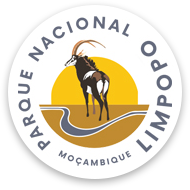The opening of the Giriyondo Access Facility on 7 December 2005 was the realisation of a dream of many years of Peace Parks Foundation and especially of Dr Rupert, Peace Parks Foundation’s Chairman and Founder and of Prof Willem van Riet, its CEO. The establishment of Peace Parks Foundation can be traced back to discussions started in 1990 on the establishment of what was to become the Great Limpopo Transfrontier Park.
On 27 May 1990, Anton Rupert, President of WWF South Africa (then called the Southern African Nature Foundation) had a meeting in Maputo with Mozambique’s President Joaquim Chissano, to discuss the possibility of establishing a permanent link between some of the protected areas in southern Mozambique and their adjacent counterparts in South Africa, Swaziland and Zimbabwe.
The concept of trans-border protected area cooperation through the establishment of peace parks had already been accepted internationally. The World Conservation Union (IUCN) had long been promoting their establishment because of the many associated benefits (Hamilton et al, 1996; Westing, 1993). In 1988, the IUCN’s Commission on National Parks and Protected Areas had identified at least 70 protected areas in 65 countries which straddle national frontiers (Thorsell, 1990).
As a result of Dr Rupert’s meeting, WWF South Africa was requested to carry out a feasibility study, which was completed and submitted to the Government of Mozambique in September 1991. The map (see above) that formed part of that study was produced by Ken Tinley and Prof Willem van Riet, now CEO of Peace Parks Foundation.
The report suggested an important conceptual shift away from the idea of strictly protected national parks towards greater emphasis on multiple resource use by local communities by introducing the transfrontier conservation area (TFCA) concept. In short, TFCAs (or peace parks), were defined as relatively large areas that straddle frontiers between two or more countries and cover large-scale natural systems encompassing one or more protected areas. Very often both human and animal populations traditionally migrated across or straddled the political boundaries concerned. In essence, TFCAs therefore extend far beyond designated protected areas, and can incorporate such innovative approaches as biosphere reserves and a wide range of community-based natural resource management programmes (World Bank, 1996). (PPF subsequently adopted this new paradigm.)
As a result of the political constraints prevalent in southern Africa at the time of the initiation of the GEF-funded programme in Mozambique, only limited attention could be given to the development of formal links between the three main participating countries, i.e. Mozambique, Zimbabwe and South Africa, and unfortunately this persisted throughout the duration of the study.
Two years after the election of Nelson Mandela, South Africa was experiencing a rapid and significant growth in its nature-based tourism industry, but very few of the benefits associated with this growth were being made available to Mozambique. These concerns prompted Dr Anton Rupert to request another meeting with President Chissano, which was held on 27 May 1996. At this meeting, Rupert emphasised the significant economic benefits that could accrue to Mozambique if the proposed TFCAs involving Mozambique were implemented. The Maputo discussions were followed by a Transfrontier Park Initiative meeting in the Kruger National Park on 8 August 1996 under the joint Chairmanship of Mozambique’s Minister of Transport and Communications, Paulo Muxanga, and South Africa’s Minister of Transport, Mac Maharaj, where it was agreed that the two countries, together with Zimbabwe and Swaziland, should cooperate to realise the economic benefits of the proposed TFCAs.
Towards the end of 1996, it became clear that interest in the peace park concept was not only growing within the countries mentioned, but also in other neighbouring states. For the first time, southern Africa as a whole was being seen as a tourist destination, and an integral part of this vision was the development of TFCAs or peace parks (De Villiers, 1994; Pinnock, 1996). There was a growing recognition that tourism could be the one industry with the potential to become the economic engine that would create the jobs that were so urgently needed on the subcontinent.
The Executive Committee of WWF South Africa came to the conclusion that, unless a separate body was set up to coordinate, facilitate and drive the process of TFCA establishment and funding, these peace parks would not receive the attention that was required to make them a reality. Accordingly, Peace Parks Foundation was established on 1 February 1997 with an initial grant of R1,2 million (US$ 260,000) from the Rupert Nature Foundation to facilitate the establishment of TFCAs in southern Africa as a first area of focus.

